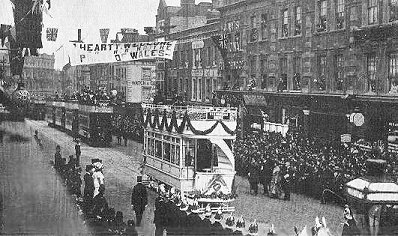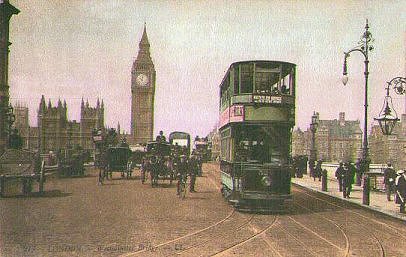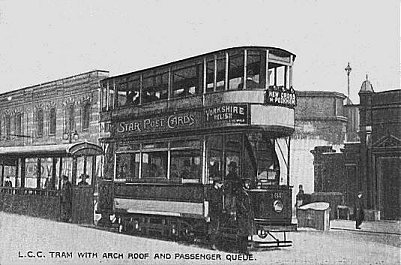John Prentice has very kindly given permission to use some text, from his excellent and very interesting Tramway Information website. We are also most grateful to Mr Prentice for the permission to use the images taken from his extensive collection of historic tram postcards.

Opening of London County Council Electric Tramways 1903. Used with the permission of John Prentice and Tramway Information website
Opening of London County Council Electric Tramways (1903)

Car 320 on Westminster Bridge 1906. Used with permission of John Prentice and the Tramway Information website.
London County Council Car 320 on Westminster Bridge, London (1906)

Car 186 at Blackfriars c1908
London County Council Car 186, Blackfriars (c 1908)

